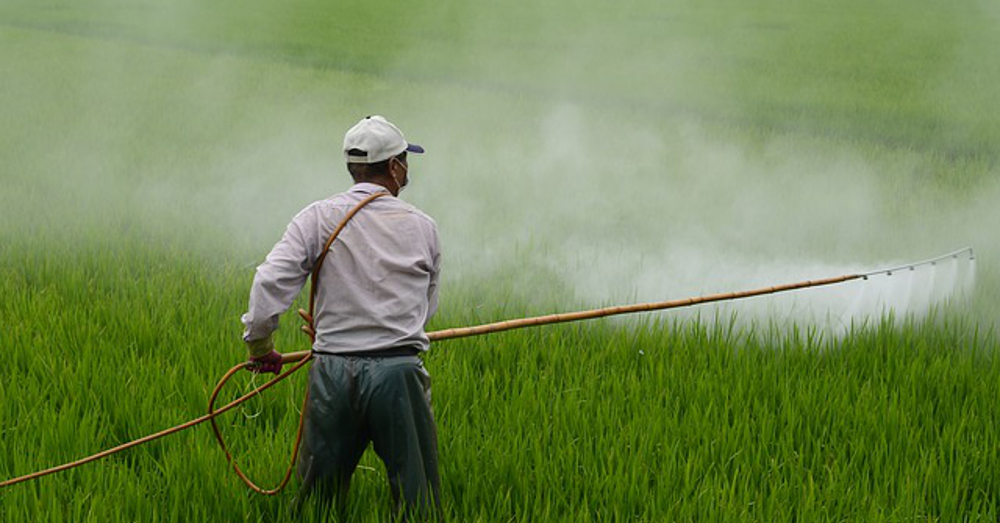
Big Agro on Campus
Glyphosate, the world’s most popular weed killer, which is sold primarily by Monsanto, an agrochemical multinational, is sprayed on 15,000 hectares of New Brunswick’s Crown land each year, and is believed to be wiping out the food source for animals.
April 11, 2017 | Source: The Walrus | by Bruce Livesey
In early 2014, New Brunswick’s Department of Natural Resources (DNR) was facing a crisis. Rod Cumberland, former chief deer biologist for the province, had been waging a media and letter-writing campaign to draw attention to an unfolding disaster in the province’s forests—namely, the collapse of the white-tail deer population, which had dropped to 70,000 from a peak of 286,000 in 1985.
Cumberland was convinced that he had identified the culprit: glyphosate, the world’s most popular weed killer, which is sold primarily by Monsanto, an agrochemical multinational. Glyphosate is sprayed on 15,000 hectares of New Brunswick’s Crown land each year, and Cumberland believes the herbicide is wiping out the animal’s food source. “Each white-tail eats about a ton of food a year,” he explains, “so we were basically removing enough food to feed 32,000 of them annually.”
Cumberland’s charges placed the province in a bind. The government uses glyphosate to stunt the growth of hardwood trees—which the deer feed on—making it easier for the forest industry to grow softwood trees that can be turned into lumber. The chemical therefore sits at the very centre of one of the province’s most important industries. Internal emails from 2014 show senior provincial dnr bureaucrats scrambling to respond to Cumberland, at one point sharing damage-control suggestions from J. D. Irving Ltd., New Brunswick’s largest forestry company. Eventually, they hit upon a solution: find scientists who could defend glyphosate to the public.
Among the experts they enlisted was Len Ritter, a toxicologist from the University of Guelph well known for his claims that the dangers of pesticides and herbicides are misrepresented. Ritter was touted as one of three go-to scientists on a pro-glyphosate website sponsored by the New Brunswick government and forest companies. Last year, he and the others were sent to cities and towns across both New Brunswick and Nova Scotia, where they made presentations and answered questions from local residents about the provincial herbicide-spraying programs. At the public forums, the scientists argued that the decline in deer had been caused by harsh winters and coyotes. (Cumberland counters that deer populations in Maine and Quebec face the same climate challenges and predators, yet haven’t plunged as dramatically.)
Glyphosate is sprayed on 15,000 hectares of New Brunswick’s Crown land each year, and Cumberland believes the herbicide is wiping out the animal’s food source. “Each white-tail eats about a ton of food a year,” he explains, “so we were basically removing enough food to feed 32,000 of them annually.”
Cumberland’s charges placed the province in a bind. The government uses glyphosate to stunt the growth of hardwood trees—which the deer feed on—making it easier for the forest industry to grow softwood trees that can be turned into lumber. The chemical therefore sits at the very centre of one of the province’s most important industries. Internal emails from 2014 show senior provincial dnr bureaucrats scrambling to respond to Cumberland, at one point sharing damage-control suggestions from J. D. Irving Ltd., New Brunswick’s largest forestry company. Eventually, they hit upon a solution: find scientists who could defend glyphosate to the public.
Among the experts they enlisted was Len Ritter, a toxicologist from the University of Guelph well known for his claims that the dangers of pesticides and herbicides are misrepresented. Ritter was touted as one of three go-to scientists on a pro-glyphosate website sponsored by the New Brunswick government and forest companies. Last year, he and the others were sent to cities and towns across both New Brunswick and Nova Scotia, where they made presentations and answered questions from local residents about the provincial herbicide-spraying programs. At the public forums, the scientists argued that the decline in deer had been caused by harsh winters and coyotes. (Cumberland counters that deer populations in Maine and Quebec face the same climate challenges and predators, yet haven’t plunged as dramatically.)
